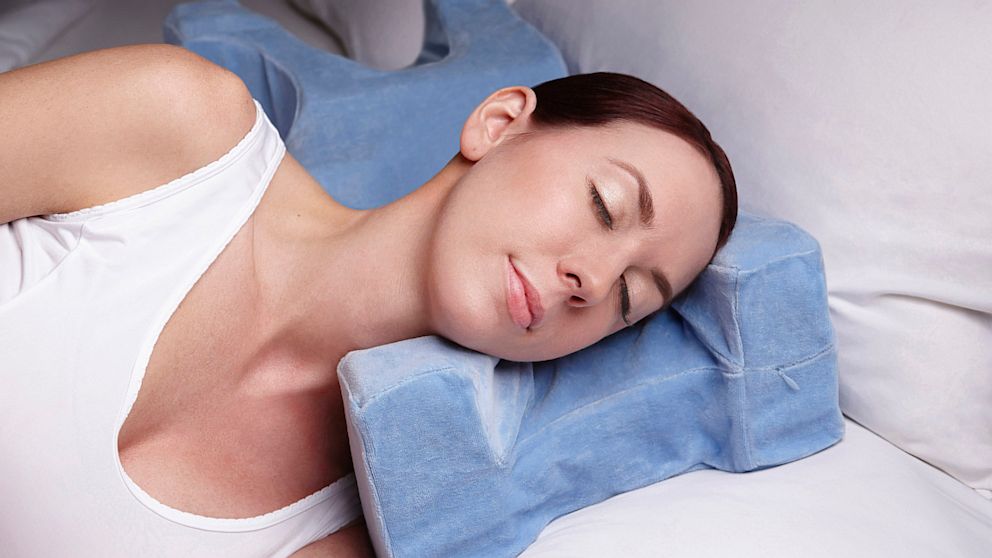Reduce Wrinkles While You Sleep: New Pillow's Promise
"Beauty sleep?" Dream on! Sleeping doesn't relieve wrinkles, it causes them.

July 9, 2013 -- "Beauty sleep?" Dream on! Sleeping doesn't relieve wrinkles on the face, say dermatologists, it causes them. Now, however, a Las Vegas plastic surgeon says she has found the solution: a new type of pillow.
According to the American Academy of Dermatology, resting your face on the pillow the same way every night for years on end leads to wrinkles. Called sleep lines or sleep wrinkles, they eventually become etched onto the surface of the skin, says the Academy, and no longer disappear when the head is not resting on the pillow.
"Women, who tend to sleep on their sides, are most likely to see these lines appear on their chin and cheeks," says an Academy statement. "Men tend to notice these lines on the forehead, since they usually sleep with the face pressed face-down on the pillow."
Sleep wrinkles, according to dermatologists, are distinct from so-called expression wrinkles, caused by repeated contractions of the facial muscles (smiling, frowning, etc.).
DO FACIAL WRINKLES PREDICT BONE FRACTURE RISK?
Richard G. Glogau, M.D., clinical professor of dermatology at the University of California San Francisco, ranks among the world's foremost authorities on facial aging. His "Glogau Wrinkle Scale" has become the standard tool used by physicians to classify the severity of frown lines, wrinkles and sun damage.
Expression wrinkles, says Dr. Glogau, can be improved by various means, including wrinkle creams, skin resurfacing, plastic surgery and injections of Botox, which, by weakening the muscles underlying the skin, reduces their contractions. Sleep wrinkles, however, cannot be improved with Botox, he explains, because contractions do not cause them.
"They have been around as long as there have been pillows and people sleeping," he tells ABC News. But they are getting more attention now because Botox isn't effective against them. The only therapies available, he says, are the old stand-bys: using small amounts of filler to soften them, putting tape on one's face before bed to prevent the skin from deforming, and, if all else fails, sleeping on one's back (so one's face isn't squashed).
Sleeping on one's back, however, doesn't work for everybody. Dr. Goesel Anson of Las Vegas, nationally recognized in aesthetic plastic surgery of the face, cites statistics showing that sleepers typically change position 20 times a night, spending only 33 percent of their time on their back, 60 percent on their side and 7 percent on their stomach.
WOMEN GETTING FACE-SLAPPED TO AVOID WRINKLES
It was her patients' frustration with the lack of treatment for sleep wrinkles, Dr. Anson tells ABC News, that gave her the incentive to come up with JuveRest, a new-fangled pillow designed to prevent distortion of the face.
To develop the product, she collaborated with JuveRest co-founder Cynthia Callendar, a Las Vegas lawyer and entrepreneur who previously had brought to market Sleep Master, a new type of sleep mask.
Callendar tells ABC News that when the time came time to make the pillow's prototype, Anson took a turkey carving knife and hunk of Styrofoam—"the kind you'd use for a floral arrangement"—and went to work. Today the final product's materials are different, says Callendar, but the concept has remained the same: a central panel on which a person sleeping on their back can rest their head; and, to either side, panels designed to cradle the head of someone sleeping on their side.
The pillow will go on sale on QVC in July (price: $180). It also can be bought through JuveRest's website.




